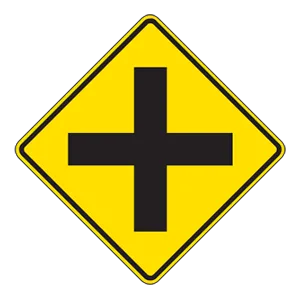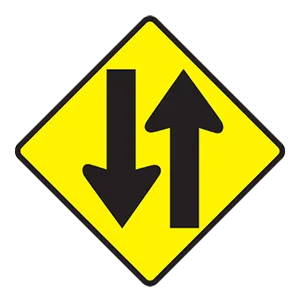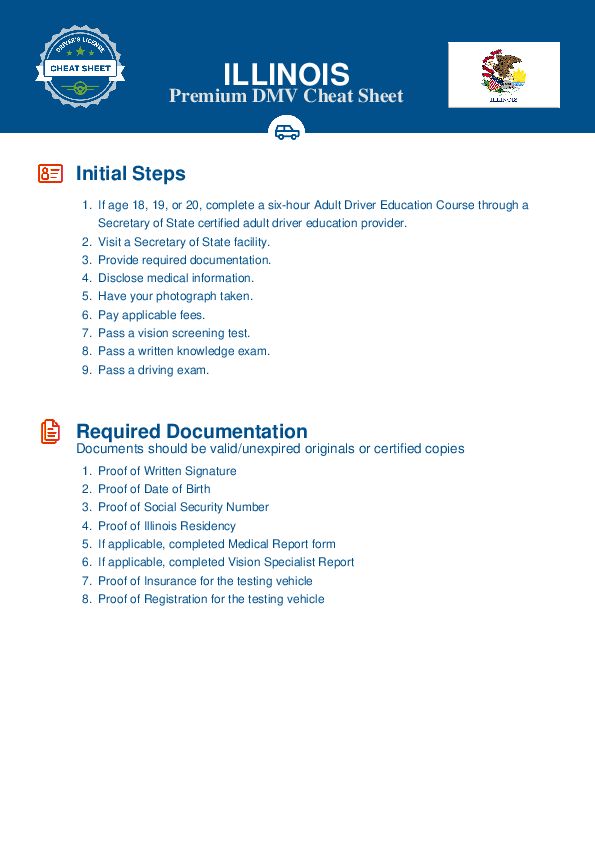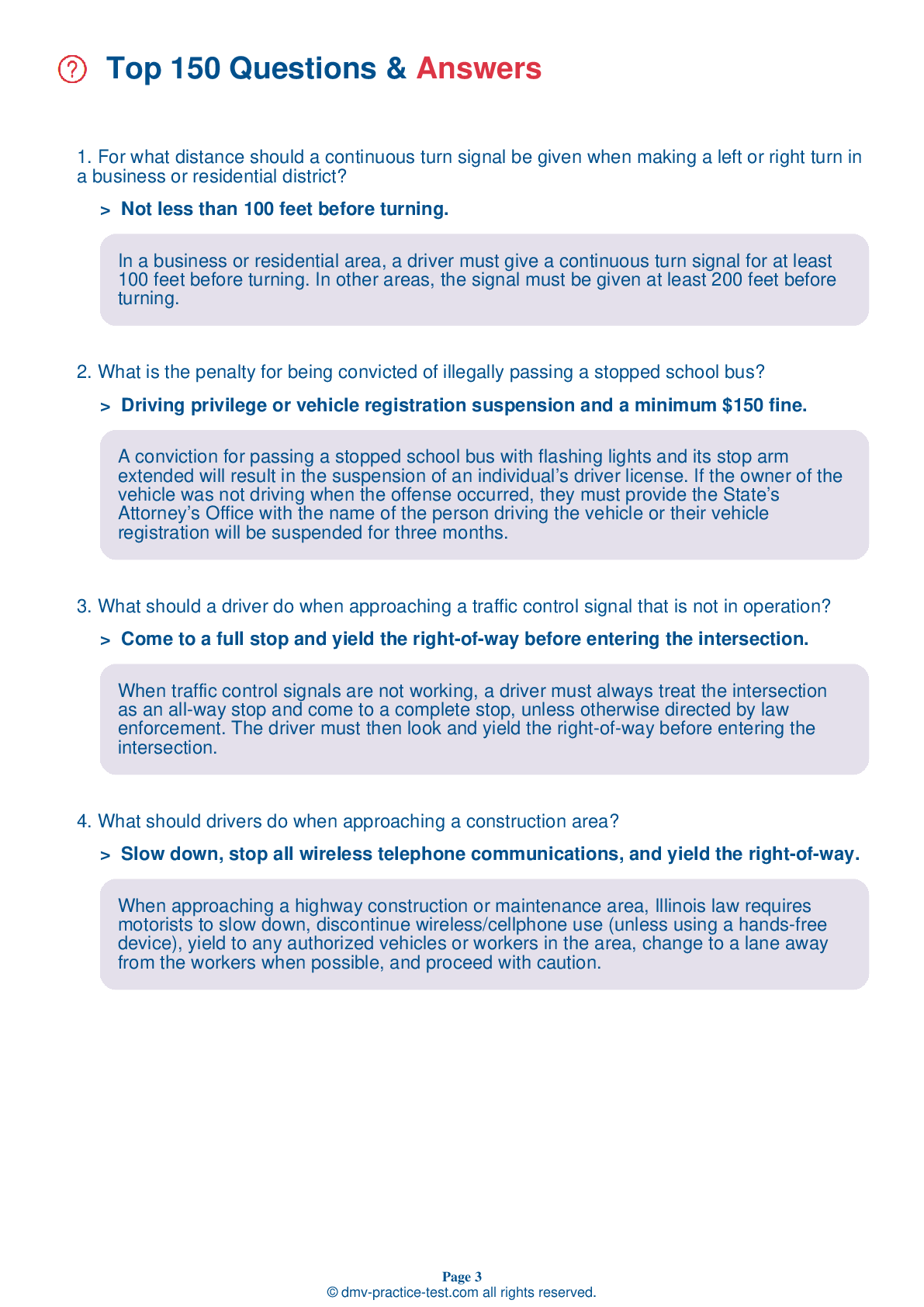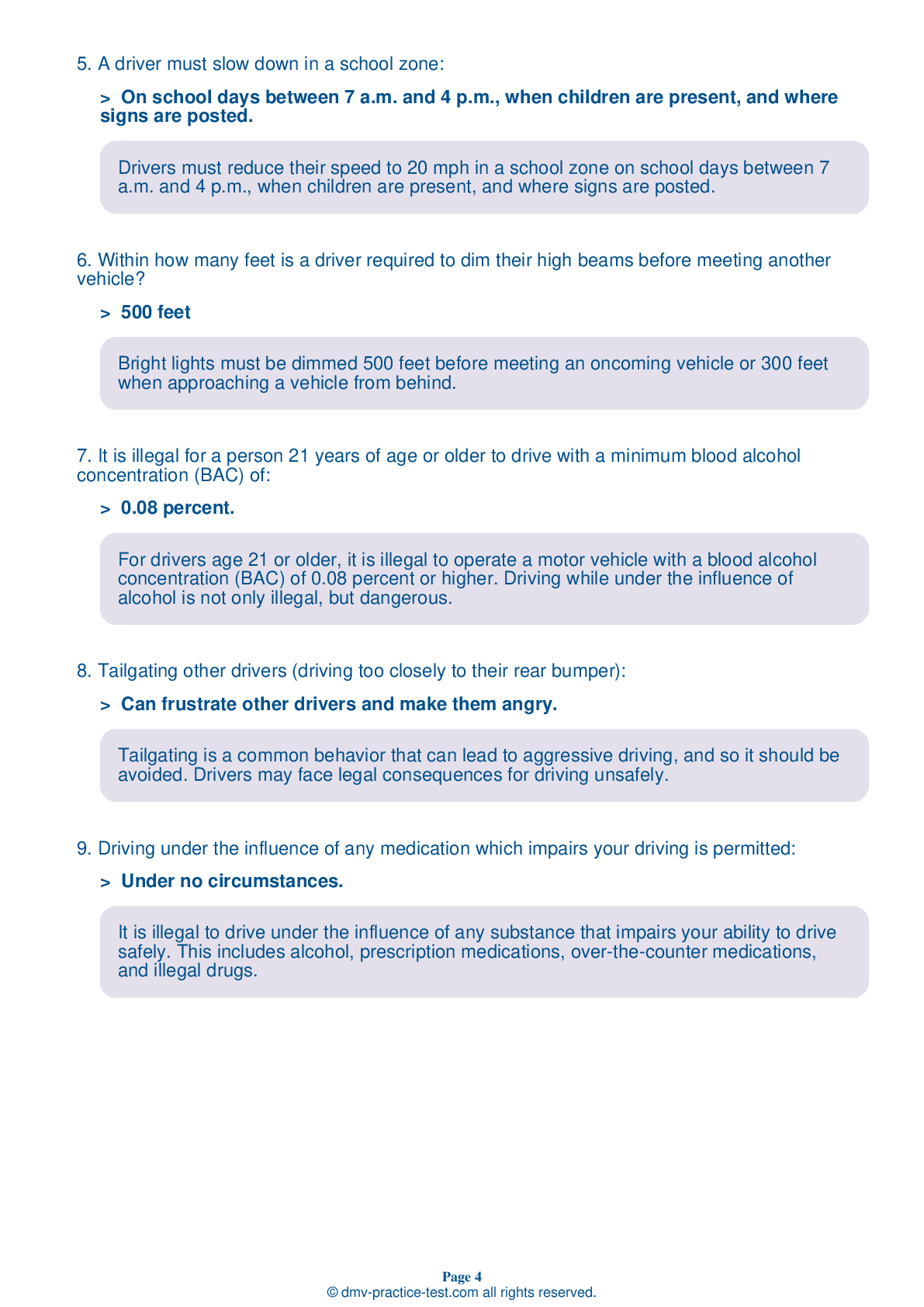FREE Illinois DMV Practice Test #15 Page 2 of 3
For January 2025, this set of Illinois DMV practise tests has been updated. It includes questions based on the most important traffic signs and rules for 2025 from the Illinois Driver Handbook. To study for the DMV driving permit test and driver's licence exam, use actual questions that are very similar (often identical!) to the DMV driving permit test and driver's licence exam.
Each question on the practise exam has a tip and explanation to help you recall the ideas. Questions about traffic rules, traffic signs, and driving statutes, as well as information from the Driver Handbook, will be included in the written portion of the official DMV test.
You must properly answer 38 of the 35 questions to receive a passing mark. To help you prepare for your Illinois instruction permit or driver's licence, take our DMV practise test.
The DMV exam is offered in a variety of languages.
Using any form of testing help will result in an automatic fail, and the DMV may take further action against your driver's licence, so avoid it.
13 . Prior to entering a curve:
You may drive more slowly than the posted speed limit, based on road conditions, but it is illegal to drive any faster than the posted speed limit. Some conditions which require reduced speed for safety include approaching curves or hills where visibility is limited, driving on slippery roads, and driving on roads where animals and pedestrians are present.
15 . Your driving privileges will be suspended if you are convicted of illegally passing a stopped school bus.
A conviction for passing a stopped school bus with flashing lights and its stop arm extended will result in the suspension of an individual’s driver license. If the owner of the vehicle was not driving when the offense occurred, they must provide the State’s Attorney’s Office with the name of the person driving the vehicle or their vehicle registration will be suspended for three months.
16 . Your car must have a horn that can be heard from a distance of 200 feet.
All vehicles must have a horn that can be heard from 200 feet away. Sirens, whistles, and bells are allowed only on authorized emergency vehicles.
17 . If you are involved in or come upon a traffic crash, you should stop your vehicle in a safe, well-lighted public place that does not obstruct traffic, if able to do so.
If you are involved in or come upon a traffic crash, you should stop your vehicle in a safe, well-lit public place that does not obstruct traffic (if possible); help any injured persons (if necessary or if they ask you to); call 911 immediately; warn other drivers by using emergency flashers or flares (if available); and ask everyone involved for their names, addresses, phone numbers, driver license numbers, and license plate numbers.
18 . When turning left at an intersection:
Drivers making left turns must yield to oncoming traffic that is traveling straight. Drivers must always yield to pedestrians.
19 . This sign means:
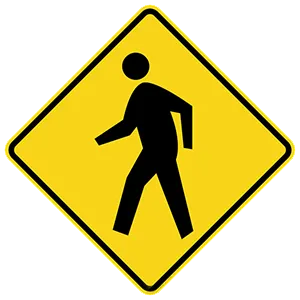
Warning signs are usually yellow with black markings. This sign alerts drivers to where pedestrians may be crossing. If a pedestrian is crossing in a crosswalk marked with this sign, drivers must stop and remain stopped until the pedestrian is no longer in the crosswalk.
20 . A driver must give the right or left turn signal when changing lanes.
Drivers must use the appropriate direction turn signal when changing lanes.
21 . You may cross double yellow lines to pass another vehicle if the:
A broken yellow line in the center of the road indicates that traffic next to the broken yellow line may pass, if it is safe to do so.
22 . This sign shows one type of:
